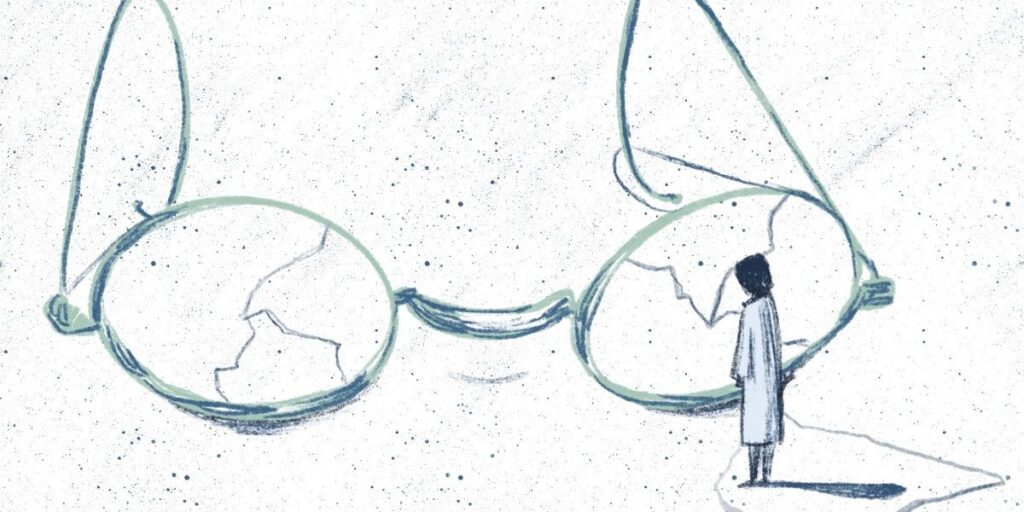“…I hate to hear ‘Jai’ shouts; they remind me of the Hindus who massacred innocent Muslim men and women while shouting such slogans, just as the Muslims killed Hindus shouting ‘Allah-o-Akbar’. I know of no greater sin than to oppress the innocent in the name of God!”
That was Mahatma Gandhi reacting to slogan-raising supporters after he cooled communal embers in Bihar in 1946. But Gandhi may as well be talking about today.
As independence approached, it seemed almost as if India needed Gandhi to perform a miracle daily. First, he calmed the communal cauldron of Noakhali, then Calcutta, Bihar, Delhi…
As the firestorm threatened to reduce India to ashes, there was a melancholic interplay between Mahatma Gandhi and Khan Abdul Ghaffar Khan, also known as ‘Frontier Gandhi’. Khan observed: “India today seems an inferno of madness and my heart weeps to see our homes set on fire by ourselves.”
How often has India set its own home on fire since then? The anti-Sikh riots of 1984, the 1992-93 massacre, 2002 in Gujarat, the recent lynchings by cow vigilantes, rising atrocities against Dalits, the crackdown on students exercising their Constitutional rights… The list is endless.
It’s staggering how so much of what Gandhi warned us about is coming true: deep religious divisions, a corrupt ruling class, the crumbling rural economy, the rise of the wealthy elite on the backs of the working class…
Many of these warnings came in the last years of Gandhi, the most tumultuous of his life. They marked his greatest triumph, but also his greatest losses. India achieved independence from British rule in 1947, the result of a remarkable non-violent struggle that inspires movements across the world even today. But it was also a time of Partition, which resulted in some of the worst bloodletting the world has ever seen. Gandhi’s dream of a united, free India turned to dust before his eyes.
A study of Gandhi’s last years, therefore, is important to understand why India took the path that it did and why it is at a crossroads today. They offer a study also of how one of the most charismatic and effective mass leaders the world has seen had turned into a lonely pilgrim by the time he was shot dead in January 1948.
‘Who listens to me today?’
The obstacles Gandhi surmounted were not always on the physical plane, though even those were formidable. They came not from the stress on his body from his frequent fasts or his bleeding soles as he walked through the forests of Noakhali or from his opponents. Often, they came in the form of those he had worked with closely through the freedom struggle.
In his last years, few of his proteges or political lieutenants had time for his advice. He was called upon every time a situation needed handling, but little heed was paid to him otherwise.
“One calls himself my beta, the other calls himself my chela. Par meri koi nahi sunta,” Gandhi observed shortly before his assassination in an oblique reference to Jawaharlal Nehru and Vallabhbhai Patel.
There’s another conversation Gandhi had, this time with a co-worker. The co-worker pointed out that it was his leadership that took India to the brink of independence but now his thoughts were being ignored. Gandhi replied: “Who listens to me today?” The co-worker said: “The leaders may not but the people are with you.” Then Gandhi said: “Even they are not. I am being told to retire to the Himalayas. Everybody is eager to garland my photos and statues. Nobody really wants to follow me.”
Yet, every time the political leadership found itself unable to handle a situation, it looked to Gandhi. Each time, it asked for a miracle. Every single time, Gandhi stepped up.
Today, once again, Gandhi is under siege – from the extreme right wing that has taken over the reins of the country and is seeking to destroy his legacy. This includes patently false claims like the one about Gandhi urging V.D. Savarkar to write mercy petitions to the British or the one about him receiving a monthly allowance while he was imprisoned at the Aga Khan Palace in 1942.
The void he left behind
Gandhi’s journey ended on January 30, 1948, at Birla House in New Delhi. Nathuram Godse elbowed his way through the crowd and fired three bullets from a Beretta pistol. Gandhi collapsed in a pool of blood that seeped into the earth. He began chanting “Ram! Ram! Ram…”. The chanting faded as his life ebbed away and his closest companions knew he was gone when the chant stopped.
A saga came to an end. But did it? Isn’t Gandhi more relevant than ever today? Isn’t his life still so powerful that even those who subscribe to the ideology that killed him want to claim him as their own? Everything that Gandhi warned us about – inequality, our downward slide if communalism held sway, the pivot away from villages and its pitfalls… I could go on – has come true.
It took a Gandhi to take India to independence and then keep it together after Partition. Sadly, today, there is no Gandhi to sacrifice himself in order to heal the divisions.
Pyarelal Nayar, his private secretary, wrote in his epic chronicle Mahatma Gandhi:
“It is vital for us to know the road on which he set us and that by which we arrived and where the two bifurcated. We must understand where we are today and whither bound and whether that is the goal which the Father of the Nation envisaged for the India of his dreams, and if not, what that goal was and what we must do to reach it. Almost the first thing a foreign visitor does on arrival in India is to visit Rajghat – if he happens to be an official guest or otherwise important personage, he is escorted there – to pay homage to the Father of the Nation. Before he leaves India, he invariably ends up asking: Where is Gandhi in the India of today? That is a question which everyone owes to himself, to India, for whom Gandhiji lived and died, and to the world to ask and answer.”
Indeed, where is Gandhi? He stares back at us from currency notes and portraits. There is at least one road named after him in each town and city. But do we see his spirit in our politics? In our judiciary? The social justice he wanted was never achieved but it has grown more and more distant over the past nine years.
Unfortunately, there is no Gandhi to sacrifice himself for India and guarantee us another 70 years of relative peace and cohesion. That is why it’s up to us citizens now to work the miracles the Mahatma once did.
Gandhi told Khan Abdul Ghaffar Khan once: “A satyagrahi knows no failure.” What he meant was that each failure only spurs the true satyagrahi to carry on with renewed vigour. And perhaps the greatest satyagrahi of all is still trying, even beyond the grave, to tell us something, to perhaps start anew.
[Ashraf Engineer is a veteran journalist and host of the All Indians Matter podcast. He recently launched the ‘Gandhi – The Final Years’ limited podcast series. It is available on all audio platforms.
Sources: ‘Mahatma Gandhi’, Volumes 9 and 10, by Pyarelal Nayar and ‘Let’s Kill Gandhi: A Chronicle Of His Last Days, The Conspiracy, Murder, Investigation, Trials And The Kapur Commission’ by Tushar Gandhi. Courtesy: The Wire.]




